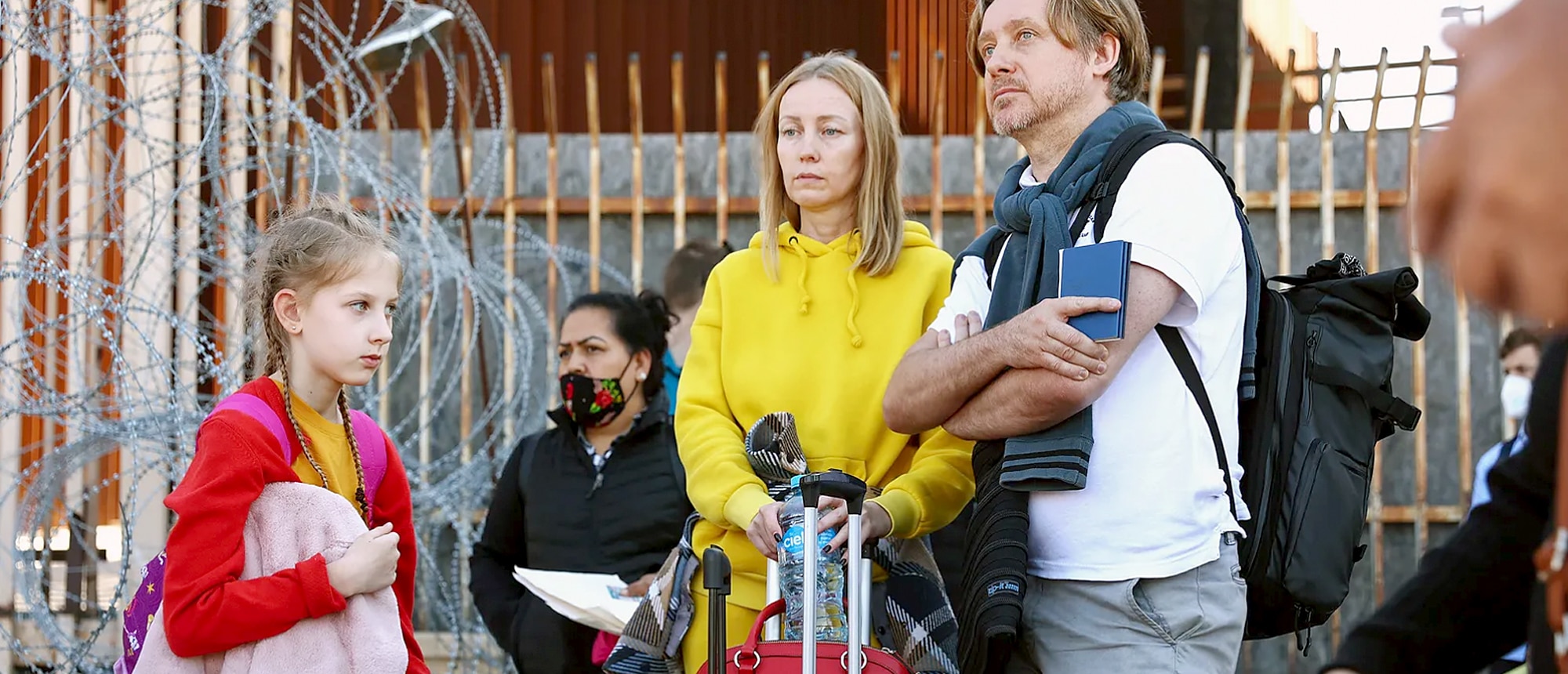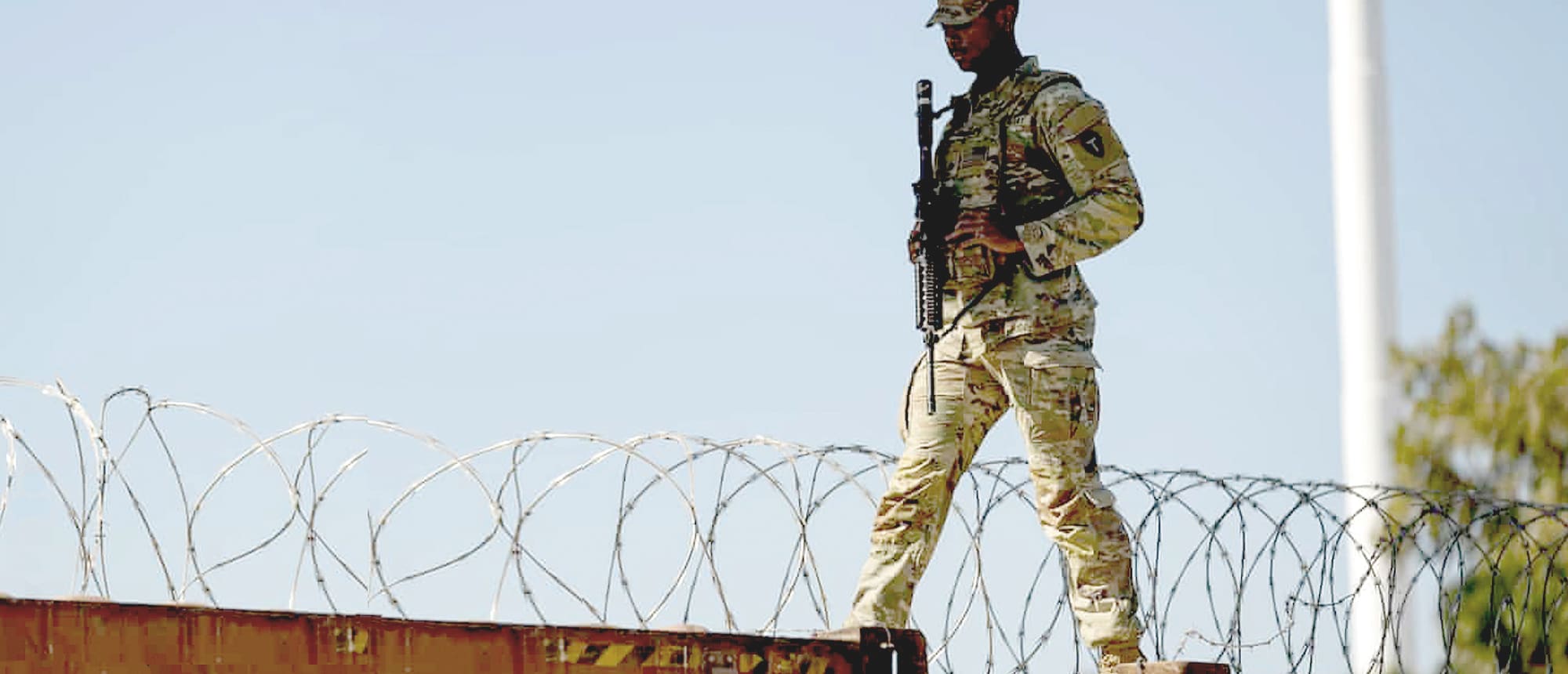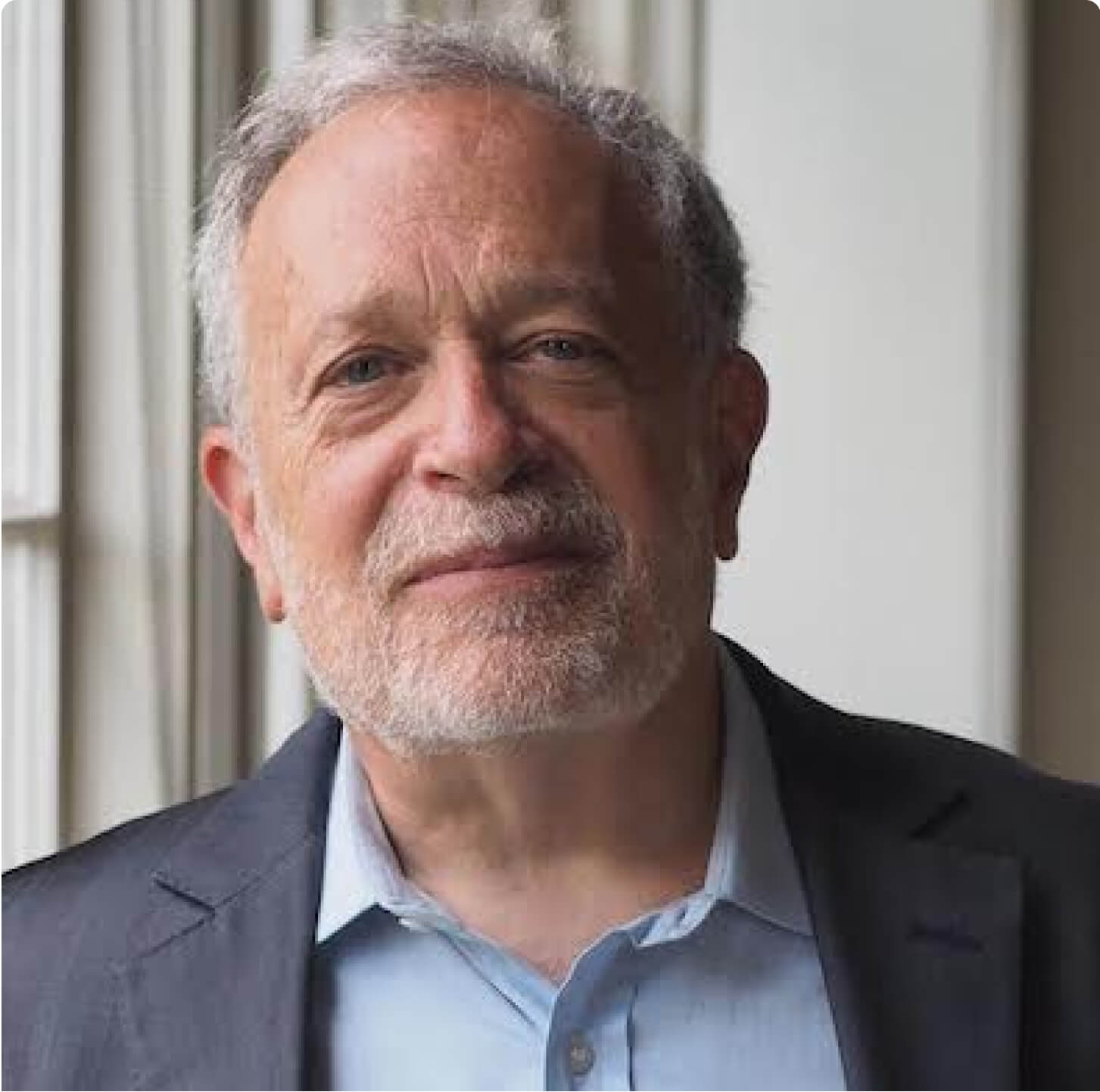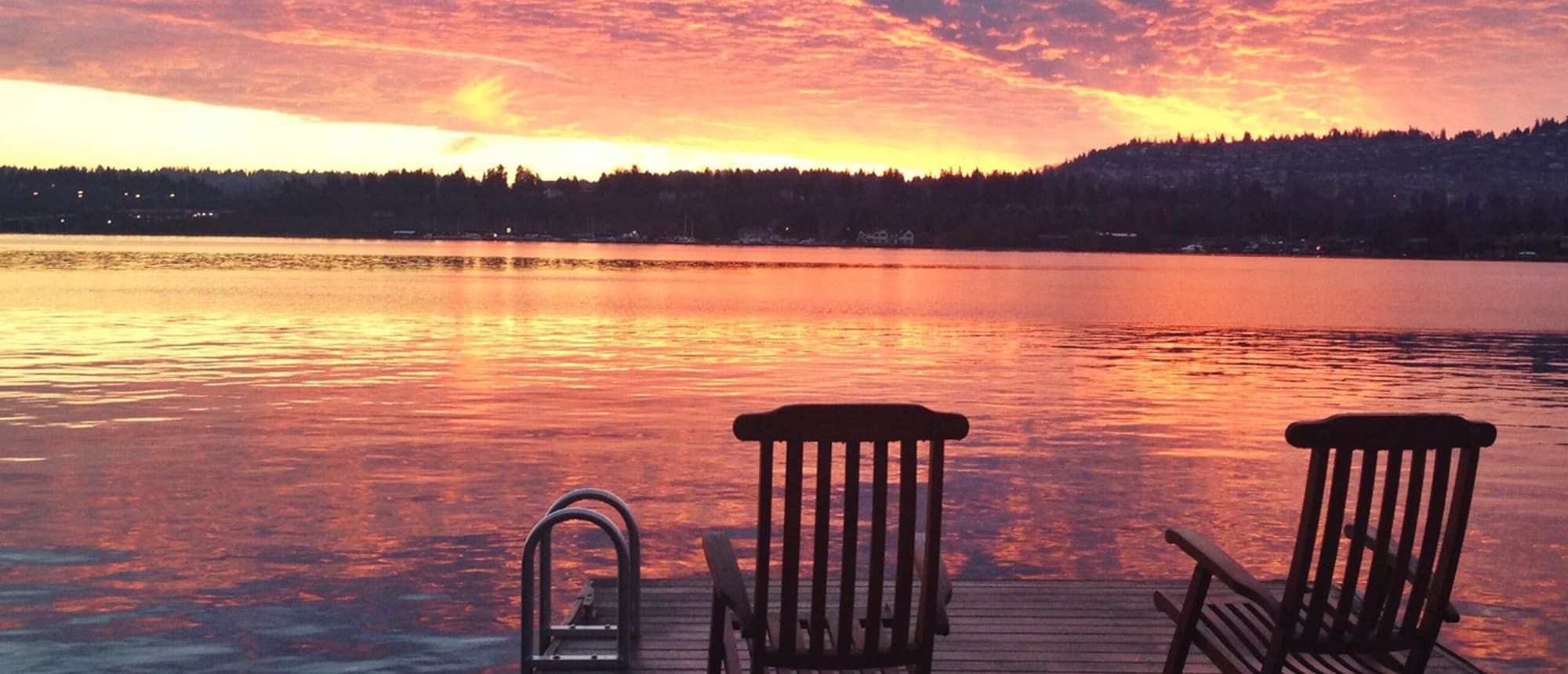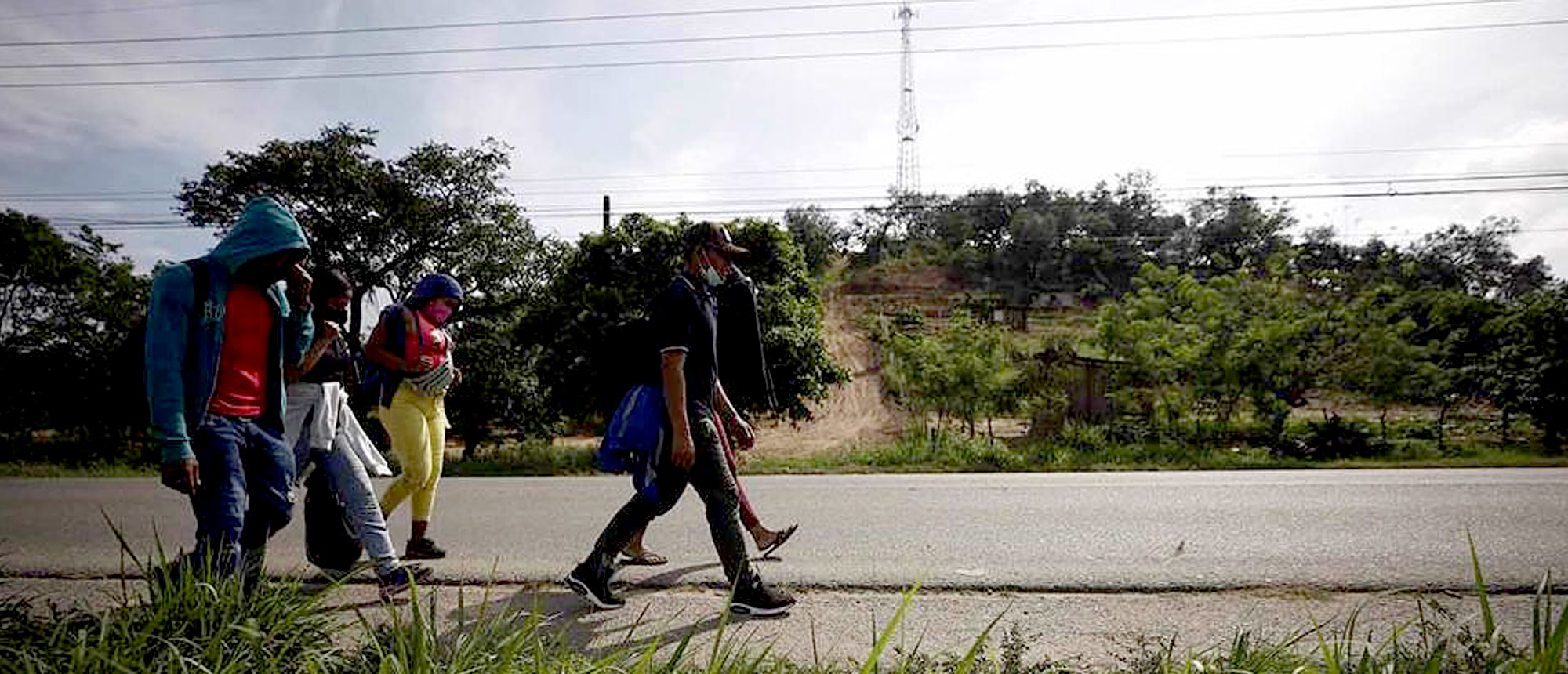Putin’s War Gives America A Chance To Get Serious About Refugees
These past brutal weeks have become only more unbearable as pictures emerge of the devastation that Russia has left behind in the towns around Kyiv. Still, shock events on this scale do present an opportunity to unstick locked-in attitudes and policies, which is something we badly need, particularly because we face an even larger and more existential challenge than the rise of Putin-style despotism: the climate crisis, and, with it, the almost unimaginable refugee challenge that is coming our way as the planet warms. There’s a chance that the war in Ukraine could be instrumental in helping to renew our resolve to take on both.
So far, the most widely noted area of overlap between the Ukrainian tragedy and global warming has had to do with energy. The fact that Russia’s war machine is funded by fossil fuel, and that Putin uses control of gas supplies to intimidate Western Europe, has begun to shake up energy policy: Germany has moved up its target date for a conversion to clean energy, for instance. And, if the Biden Administration has caved to Big Oil’s insistence on increasing the supply of hydrocarbons, at least that stance is being more urgently and broadly questioned. Last week, in the Times, Thomas Friedman insisted that, instead of doubling down on fossil fuels, we should “double the pace of our transition” off them, because “nothing would threaten Putin more than that,” and because the temperature in the Antarctic last month was seventy degrees above normal. “Our civilization simply cannot afford this anymore,” he wrote, a point underlined by today’s release of a dire and comprehensive report from the Intergovernmental Panel on Climate Change.
But, even if we seize this moment to dramatically accelerate the transition to solar and wind power—even if we somehow manage to meet the scientific mandate to cut emissions in half by 2030—we’ll still face the huge and unavoidable consequences of the warming that we’ve already unleashed. And chief among these is the fact that we’re steadily shrinking the area of the planet that humans can inhabit, and, in the process, creating refugees and migrants in what will almost certainly turn out to be unprecedented numbers: the United Nations estimates that we could see two billion climate migrants before the century is out. So the fact that Putin has created four million refugees in a matter of weeks is a test of our systems.
Those systems are straining. Volunteers have been showing up at European train stations offering spare rooms to fleeing Ukrainians, but there’s probably a limit to that kind of generosity. A resident of Vienna named Tanja Maier provides a daily account on Twitter of her efforts to help people arriving in that city, and recently she wrote that some of them are heading back home, “as the disenchantment sets in and the reality of the refugee experience in Europe without funds takes its toll. So much is luck and money. You need both.” The sheer scale of the exodus is overwhelming: Moldova, for instance, has seen four hundred thousand people come across its border; most have moved on to other countries, such as Romania, but a hundred thousand have been absorbed there—in a country of 2.6 million people.
The United States is a country of three hundred and thirty million people, with a per-capita income more than four times that of Moldova, which makes the Biden Administration’s offer, issued last month, to take in a hundred thousand Ukrainians, seem slightly less generous. Nevertheless, Biden’s move is a politically brave one, considering how, in recent elections, Republicans have demagogued anything to do with immigration. He’s got away with it so far, though—partly because the daily pictures from Ukraine make it clear just how necessary it is, and partly because, as refugees from other war-torn territories have pointed out, Ukrainians are white. As an Afghan refugee in an Italian camp told a reporter, “People who used to give spare clothes and food to us are now giving them to Ukrainians.”
Even Biden’s offer, however, demonstrates how broken our immigration and refugee systems are: a group of Ukrainian refugees told the Washington Post that visits to U.S. embassies in European capitals had proved useless. “They told us, ‘Sorry, we don’t have any options for you yet,’ ” one man said. So they flew to Mexico City and on to Tijuana, where some fifteen hundred are now camped a few yards from the U.S. border. The closest thing to a register of the refugees is a numbered list that volunteers keep on a yellow legal pad, the Post reported. “No. 612 was Gleb Prochukhan, 15, the No. 3-ranked junior table tennis player in Kharkiv, whose English was good enough to translate for some of the foreign volunteers who had descended on Tijuana with blankets and protein bars and tacos.”
Of course, the number of Ukrainian refugees on the border is nothing compared with the number of refugees from South and Central America, who have been stuck at the border for years, ever since the Trump Administration, under the guise of covid protection, stopped taking their applications. The Biden Administration may lift that policy next month, but it hasn’t said how many people it will admit, or under what circumstances. On Friday, the Post reported, “A family of Honduran asylum seekers, turned away at the border, passed by the Ukrainian encampment to ask for small change.”
Hondurans and their Central American neighbors, in fact, have as strong a claim to shelter here as Ukrainians do. By 2019, Honduras was in the fifth year of a devastating drought, linked to climate change, that, in some parts of the country, cut corn yields by more than seventy per cent. An internal report from the U.S. Customs and Border Protection agency, obtained by NBC News, found that a crop shortage was the “overwhelming factor driving record-setting migration” from Guatemala. The report describes that shortage as leaving citizens “in extreme poverty and starving.” Then, in 2020—at the end of the most active hurricane season ever recorded in the Atlantic—within two weeks, two huge storms crashed into the region, doing damage estimated at forty per cent of Honduras’s G.D.P. By contrast, the costliest U.S. natural disaster ever, Hurricane Katrina, which displaced a million or more Americans, dented the nation’s economy by only one per cent of its G.D.P. (And Hondurans did next to nothing to cause the climate crisis that drove that drought and those storms—the average Honduran emits one-fifteenth as much carbon dioxide as the average American.)
We should obviously care about Ukrainian suffering, but we should also care about the suffering of Central Americans, and of others—such as Somalians, who have been enduring an escalating drought. As Reuters reported last month, “It has not rained on Habiba Maow Iman’s farm in southern Somalia for two years. Her animals are dead; her crops failed. . . . The 61-year-old is one of tens of thousands seeking aid on the outskirts” of a refugee camp that is now in the midst of a measles epidemic. Somalia’s per-capita carbon emissions are about 0.3 per cent of America’s.
Which brings us back to the present moment, and the opportunity that President Biden now has to dramatically shift the tenor of this debate in favor of making immigration and asylum easier. To do so, he’ll need to argue on practicalities as well as on principles. Most Americans agree that immigrants are hardworking and improve the country. Meanwhile, unemployment is approaching record lows, and many people sense that we need more bodies in the workforce. To look at the health-care industry, for example, if you’re a rural American, you know that we’re running desperately short of doctors; if you’re an aging American, you know that there’s already a dire shortage of home health-care workers, which is going to get worse in the years ahead. And so on. America’s population is barely growing now; as Derek Thompson pointed out in The Atlantic last month, 2021 saw the slowest growth in the nation’s history, in part because so many people died of covid, in part because fewer people had babies, and—in the largest part—because immigration has collapsed, from more than a million people annually, before Donald Trump entered office, to less than a quarter of a million last year.
Shifting to a more welcoming set of immigration policies will require figuring out systems to take migrants in and resettle them, but lots of people are ready to assist. Krish Vignarajah, the president of the Lutheran Immigration and Refugee Service (I serve on the advisory board), told NPR that, during the past year, a hundred thousand Americans have volunteered to help, as they watched first Afghans and then Ukrainians be forced from their homes. Refugees, she said, “need everything from organizations like ours picking them up at the airport, you know, helping them find affordable housing—obviously not an easy thing to do at this moment given the housing crisis. It’s about helping them find new jobs, integrate into their communities, navigate public transportation… taking them to doctor’s appointments, helping them enroll kids in public school.”
This task won’t be easy, not logistically and not politically, but every tenth-of-a-degree rise in temperature shrinks the habitable world by some fraction, forcing more people from their homes. Just as Putin’s war gives Biden a new opportunity to make the case for renewable energy, so it gives him an opening to address this intractable problem. In both cases, it may be a last chance before climate change overtakes us.

